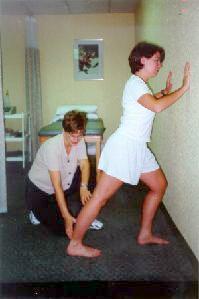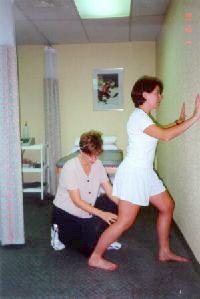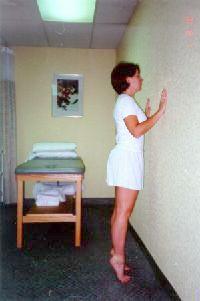Deb Fuchek's Physio Column
(Close this window to return to Deb Fuchek's Column Index)
February, 2000
Plantar Fascitis or "heel pain" is a frequent complaint of both athletes and non-athletes. It is a strain or tearing of the long plantar ligament or aponeurosis on the bottom of the foot. Common symptoms are heel pain often described as a "heel bruise". Some people complain of "arch pain" while walking, especially doing stairs and going up on their toes. Morning pain and stiffness is also common. Signs include tenderness on the heel of the foot, pain with bending the toes up and stiff ankle movements due to tight calf muscles. A heel spur may be present on an x-ray which is the result of pulling of the plantar fascia from the bone as it is strained.
Plantar Fascitis can be due to training errors, a rapid increase in running mileage, or steep hill climbing. Inadequate footwear and biomechanical factors such as over=pronation (flat footed) are causative factors. Initial treatment includes rest, ice, and can include physiotherapy. The underlying causes must be addressed either through a change in training schedule, orthotics (shoe inserts), or appropriate footwear. As well, a stretching program for the calf muscles is important to maintain flexibility and support. Including these exercises in your warm-up schedule will assist in the prevention of plantar Fascitis and improve your overall health.
|
Stretches should be held for 15 to 20 seconds and done 3 to 5 times on each side before and after workouts and more frequently if plantar fascitis is present. | ||
|
Gastrocnemius Stretch Purpose: To stretch the long calf muscle
|
Soleus Stretch Purpose: To stretch the shorter and deeper calf muscles.
|
Toe Raises Purpose: To strengthen the gastrocnemius, soleus and calf muscles which will help to support the arch of the foot.
|
| Top of Page | ||


